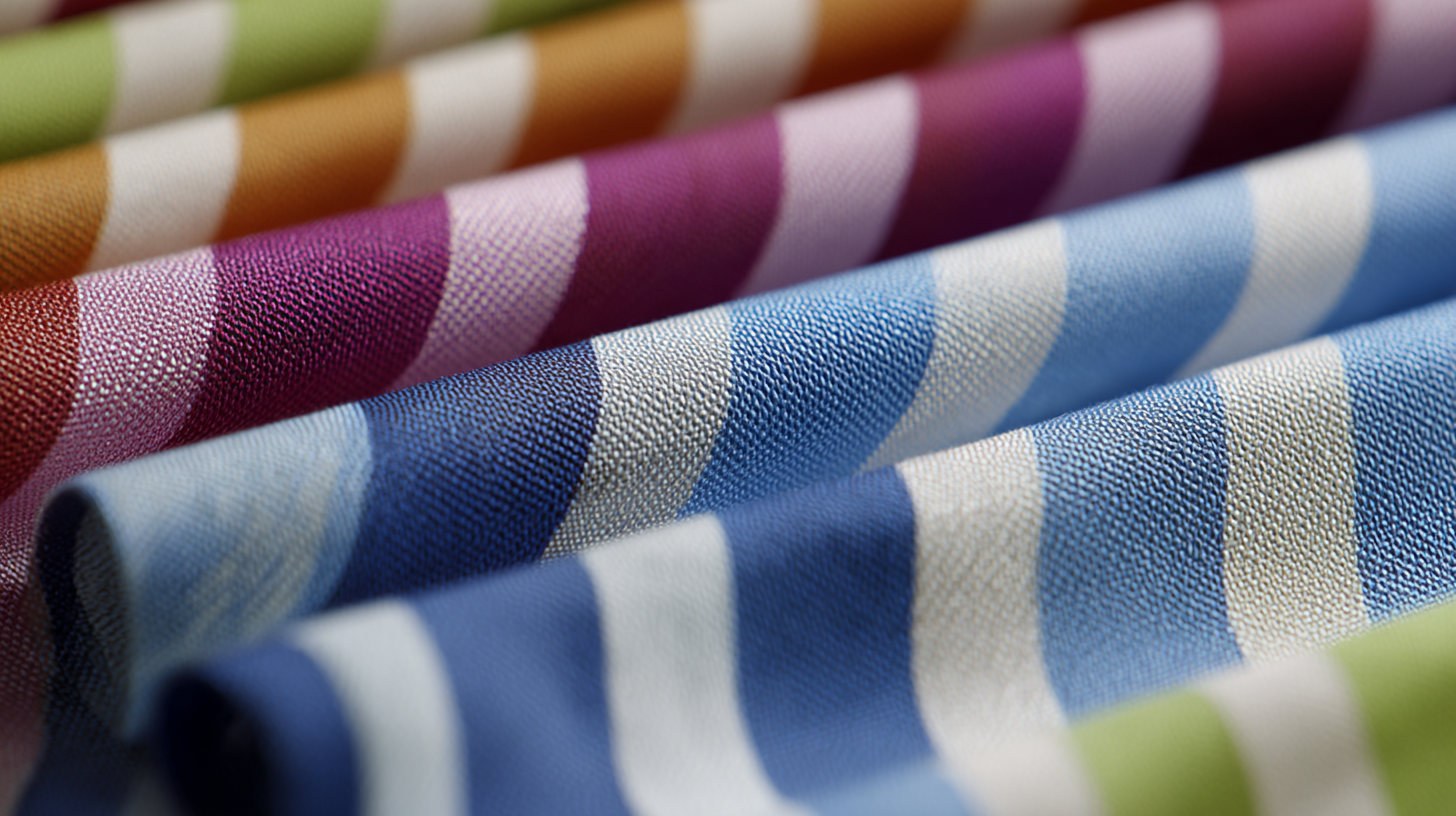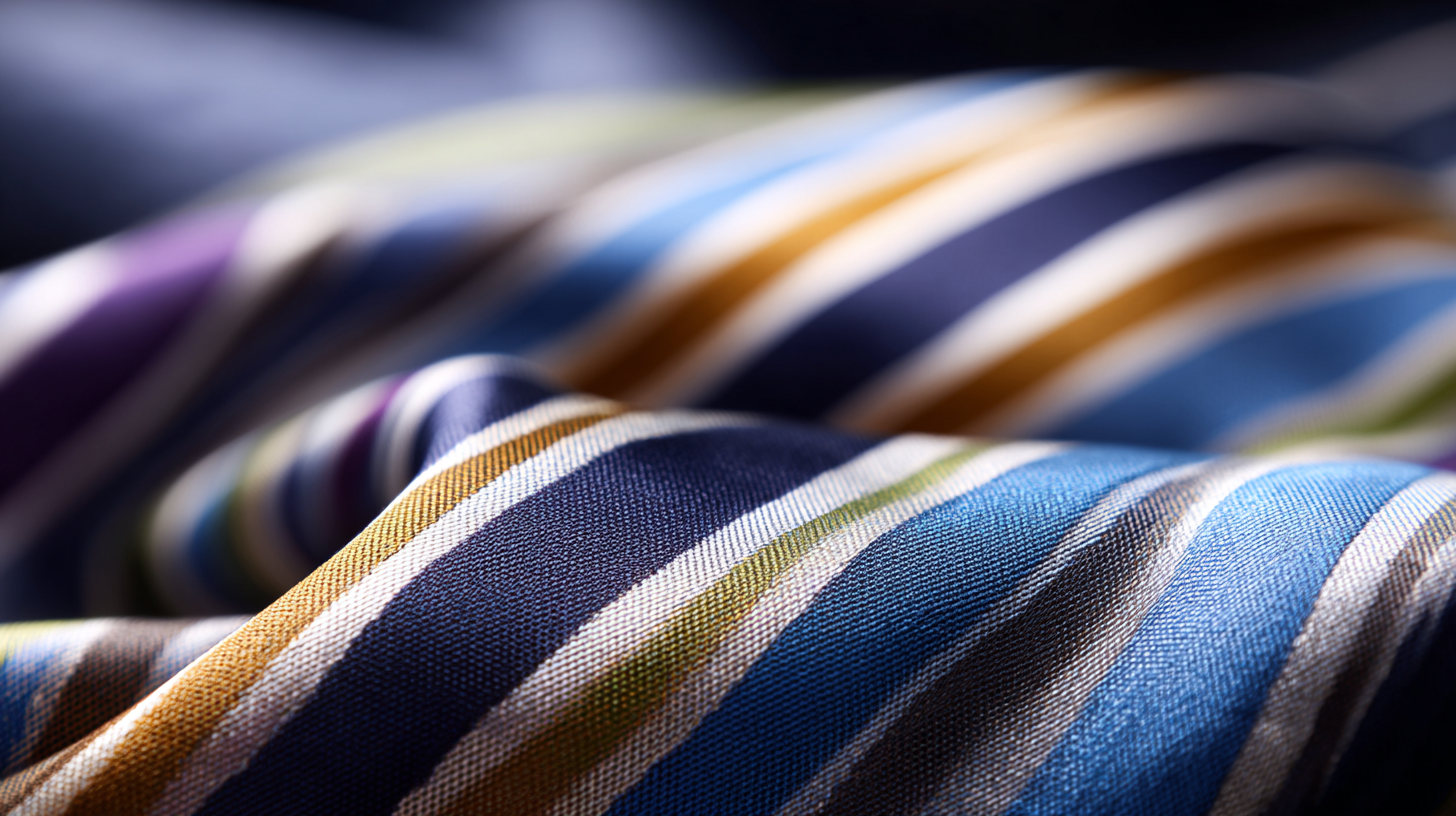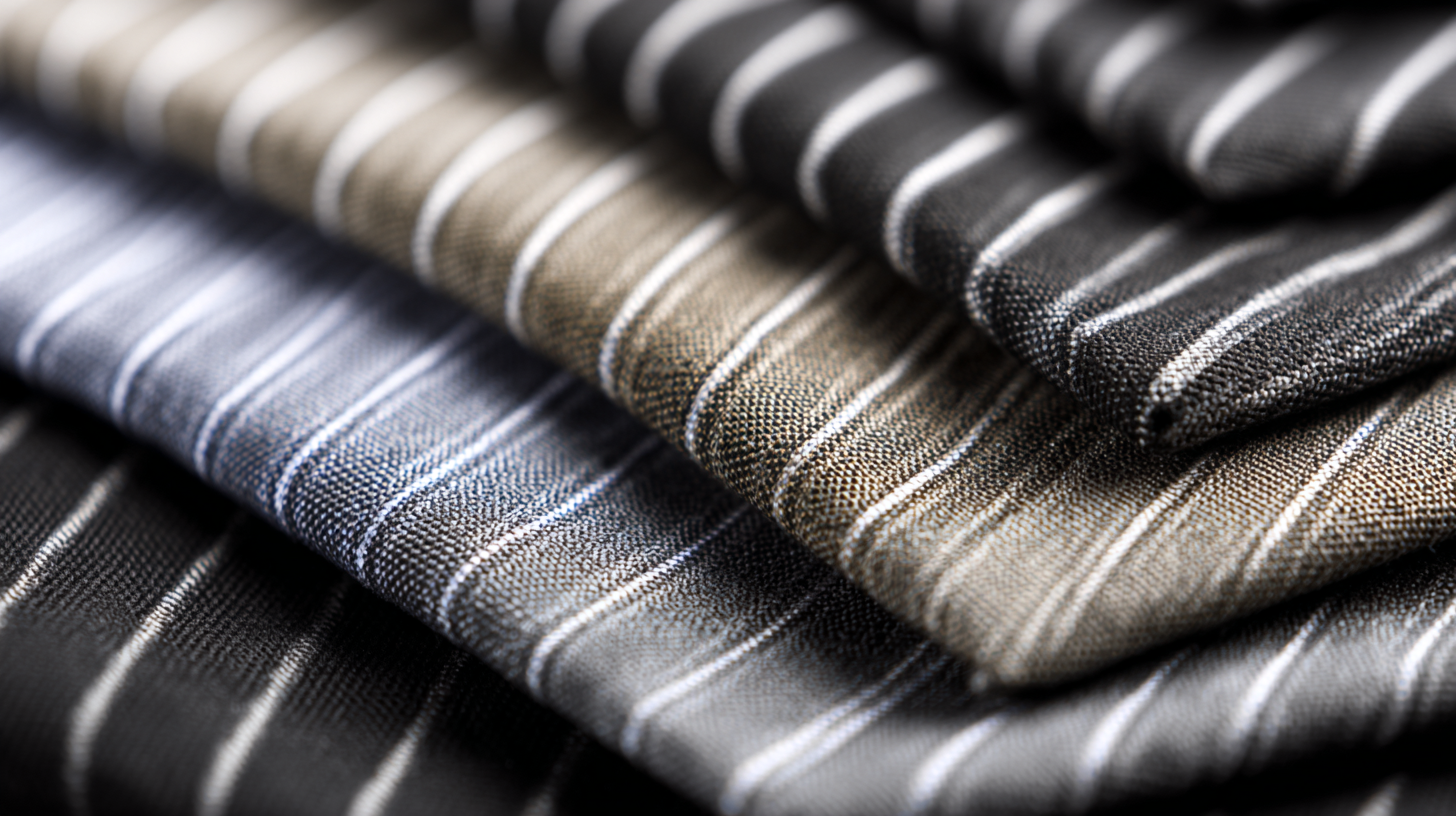In the realm of sustainable fashion, the quest for materials that marry environmental responsibility with aesthetic appeal is ever-pressing. One such innovative solution is Polyester Stripe Fabric, a versatile textile that not only showcases a unique design but also embodies sustainability principles. As consumers become increasingly conscious of their environmental footprint, the demand for fabrics that are both eco-friendly and stylish is skyrocketing. Polyester Stripe Fabric stands out in this regard, presenting a combination of durability and recyclability that traditional fabrics often lack. By embracing this fabric, fashion brands can reduce waste while offering high-quality products that resonate with ethical values. This introduction delves into why Polyester Stripe Fabric is emerging as the ideal choice for those seeking to make a positive impact on the planet without compromising on style.

The environmental impact of conventional fabrics has raised significant concerns among consumers and manufacturers alike. Traditional textiles, such as cotton and polyester, often require extensive water resources and contribute to pollution through chemical runoff. For instance, cotton cultivation utilizes about 7% of the world's pesticides, leading to detrimental effects on local ecosystems. In contrast, polyester stripe fabrics present a more sustainable alternative, as they are often made from recycled materials and consume less water during production. According to a report by the Global Fashion Agenda, switching to recycled polyester can reduce energy consumption by up to 60%.

Polyester stripe fabric not only minimizes the ecological footprint but also offers durability and versatility, making it ideal for sustainable fashion choices. An industry study indicated that polyester textiles can last up to 3-5 times longer than conventional cotton products, reducing the need for frequent replacements and thus curbing waste. This resilience makes polyester not just an eco-friendly option but also economically sensible for brands focusing on sustainable practices. As seen in fashion examples like team uniforms that feature bold designs, the aesthetic appeal of polyester stripe fabric enhances its desirability while aligning with environmentally conscious production methods.
The production of polyester, especially in the context of sustainable fashion, involves a complex interplay of energy consumption and carbon footprint. According to the Textile Exchange's "Preferred Fiber & Materials Market Report 2021," polyester accounts for approximately 52% of the global fiber market. While this synthetic material is lauded for its durability and versatility, its production process is energy-intensive. It is estimated that producing a kilogram of polyester requires around 5.5 megajoules of energy, which significantly contributes to its overall environmental impact.
Moreover, the carbon footprint of polyester production is a critical consideration for sustainable fashion brands. The World Resources Institute has reported that producing virgin polyester emits roughly 3.3 kilograms of CO2 per kilogram of fiber. This stark reality emphasizes the importance of recycling and utilizing recycled polyester, which can reduce energy use and greenhouse gas emissions by up to 90%. By opting for recycled polyester stripe fabric, fashion companies can not only minimize their ecological footprint but also promote a circular economy that aligns with the growing consumer demand for environmentally responsible choices.
| Dimension | Polyester Production | Energy Consumption (MJ/kg) | Carbon Footprint (kg CO2/kg) | Water Usage (liters/kg) |
|---|---|---|---|---|
| Conventional Polyester | Petroleum-based | 80 | 3.5 | 100 |
| Recycled Polyester | Post-consumer PET | 64 | 2.5 | 50 |
| Biodegradable Polyester | Plant-based | 75 | 2.0 | 40 |
| Future Polyester Innovations | Various Technologies | Varies | Under Development | Varies |
Polyester stripe fabric has emerged as a prominent choice in sustainable fashion due to its remarkable recycling potential and durability. By utilizing recycled plastics, this fabric not only diverts waste from landfills but also reduces the carbon footprint typically associated with virgin polyester production. The ability to produce high-quality textiles from recycled materials exemplifies how sustainable practices can be integrated into the fashion industry, providing a viable alternative to traditional fabrics.
Tips: When shopping for sustainable fashion, look for brands that prioritize materials like recycled polyester. Checking for certifications like Global Recycled Standard (GRS) can ensure that the fabric you choose meets sustainable criteria. Additionally, consider the longevity of your garments; high-quality polyester stripe fabric is designed to withstand wear and tear, thus promoting a more sustainable wardrobe through extended use.
Furthermore, the longevity of polyester stripe fabric makes it a practical choice for creating versatile clothing. Items made from this material tend to resist fading, shrinking, and stretching, ensuring that they remain in excellent condition over time. In the context of fashion, this leads to reduced consumption and encourages a mindful approach to personal style. By choosing pieces that endure, consumers can actively contribute to a more sustainable fashion economy.
The debate over sustainable fashion often contrasts
polyester and natural fibers, particularly in terms of water usage and pollution.
According to a report by the Ellen MacArthur Foundation, polyester production, while resource-intensive,
requires significantly less water than cotton cultivation. For instance,
growing one kilogram of cotton can consume up to 10,000 liters
of water, whereas producing one kilogram of polyester uses about 120 liters.
This stark difference highlights the water scarcity implications of choosing natural fibers over synthetics.
Moreover, the environmental impact of dyeing and finishing processes further compounds the pollution potential of natural fibers.
The World Wildlife Fund (WWF) notes that the dyeing of cotton fabrics can release substantial amounts of
harmful chemicals into waterways, especially in countries with lax environmental regulations. In contrast, advancements in
polyester processing have led to innovations in water recycling and reduced chemical usage. For example, leading textile
manufacturers are now implementing closed-loop systems that minimize water discharge, significantly lowering
pollution levels. This comparative analysis underscores the need to reassess sustainable fashion choices, revealing
polyester stripe fabric as a viable alternative.
As consumer demand for sustainability in fashion continues to grow, the appeal of polyester stripe fabric is gaining traction. This trend aligns with insights from various industry reports highlighting a shift toward eco-friendly materials. For instance, the recycled polyester yarn market is witnessing significant growth, projected to expand substantially between 2025 and 2032, driven by increasing environmental awareness. This movement supports the notion that polyester, which can be recycled and repurposed, is becoming a cornerstone in sustainable fashion.
 Moreover, innovations in fabric technology, along with consumer preference for durable and versatile materials, reinforce the adoption of polyester stripe fabrics. Denim mills are reporting a surge in demand for fabrics that not only showcase vintage characteristics but also incorporate sustainable practices. The integration of nanotechnology in textiles further enhances the functionality and appeal of polyester, paving the way for smarter, more sustainable apparel.
Moreover, innovations in fabric technology, along with consumer preference for durable and versatile materials, reinforce the adoption of polyester stripe fabrics. Denim mills are reporting a surge in demand for fabrics that not only showcase vintage characteristics but also incorporate sustainable practices. The integration of nanotechnology in textiles further enhances the functionality and appeal of polyester, paving the way for smarter, more sustainable apparel.
Tips: When choosing sustainable fabrics, prioritize those that emphasize recycled content and environmentally friendly production methods. Always look for certifications that indicate sustainability, as these will guide you toward brands committed to responsible practices. Explore diverse color and pattern options in polyester stripes to add versatility and style to your wardrobe while supporting eco-conscious fashion.






